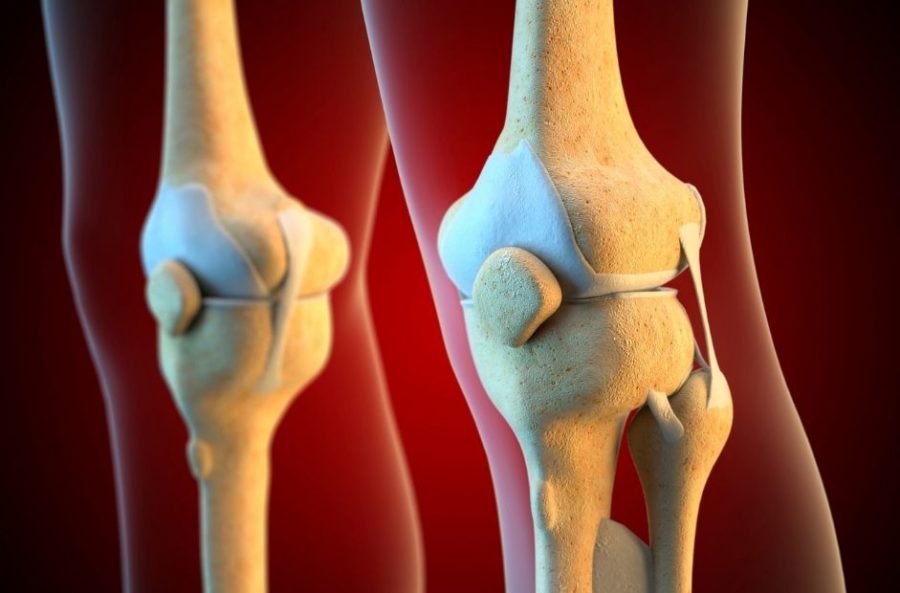As we age in life its important to understand changes that occur in the body and how we can shield our health for longevity. Osteoporosis affects nearly 20% of women and 5% of men over 50 according to the CDC.1 People who suffer from osteoporosis are more likely to break bones, especially in the hips, forearms, waist and spine. With many treatments available Vitamin D is one of the most reputable but it begs the question. How much Vitamin D for Osteoporosis is enough?
Table of Contents
What Is Osteoporosis Exactly?
Osteoporosis is when the bones in the body become weak and brittle from a loss in density. Bone is living tissue that responds when it receives signals from other parts of the body. In osteoporosis its clear that the signalling system between bone and other systems is not working properly. Its known as the silent disease as most people with this condition do not realise until they break a bone. Its estimated that even after a breaking a bone, around 80% of these patients are still not diagnosed and treated for osteoporosis, the underlying disease which has caused the fracture.
Protect Your Bones With Adequate Nutrition
When it comes to bone health it pays to focus on minerals and nutrients associated with the structuring of bones. Vitamin D, glucosamine, collagen, calcium, boron and magnesium are considered some of the most foundational aspects of good bone health.
Whats A Good Vitamin D Dosage For Osteoporosis?
According to recent studies, it appears less is more when it comes to using vitamin d for safeguarding against osteoporosis.2 In fact adults who took large amounts of this vitamin daily not only didn’t see additional gains in bone density, but in some cases ended up worse off. Using a more moderate dose of supplemental vitamin D in the range of 1000-2000IU’s will be enough to contribute to adequate bone density levels.
The Best Forms Of Vitamin D?
First and foremost, there is no better form of Vitamin D then the sun. Since the dawn of time life on Earth has evolved under the strong rays of energy of the sun and making sure you get minimum of 15 minutes of sunlight a day can help to balance natural levels.
How To Increase Vitamin D Absorption?
Healthy Gut: To enhance the absorption of vitamin D its important to make sure your gut health is in check. Things like leaky gut, irritable bowel diseases or autoimmune conditions can stop your body from utilising the vitamin in your body.
More Boron And K2: To have proper vitamin D absorption its important to also be aware of including vitamin K2, magnesium, zinc, and boron. These specific minerals play a crucial role in your bodies ability to store vitamin D into the bone.
Skintone: Now 15 minutes is only a bare minimum recommendation but it doesn’t account for skin tone and place of living. Different parts of the Earth encounter varying spectrums of UV light, places closer to the equator will require less sunlight as its stronger in these regions. Its estimated that someone with darker skin can only absorb 25% of sunlight compared to those with pale skin.
Eat Fatty Fish: Consuming omega — 3 fish such as tuna, salmon, and sardines will help to increase vitamin D levels. As well as taking supplements like cod liver oil.
Get Enough Sleep: Vitamin D production is increased by sunlight and melatonin but low body temperatures appear to be the biggest culprit. When you sleep your body produces less melatonin and allows itself to cool down more. Cold rooms and artificial air conditioning can make it harder for you to stay warm enough during the night and can lead to poor vitamin d intake.
Cholesterol Intake: Don’t skip eating your eggs! This study has shown the implifications of low cholesterol diets on our body, if you’re prone to osteoporosis its important to eat a wide range of free range animal meats and fats to ensure proper nutrition.3
Should You Supplement With Vitamin D For Osteoporosis?
As discussed previously all Vitamin D is not the same, and supplemental forms are no different. The two forms of this vitamin that people will be most familiar with are vitamin D2, known as ergocalciferol which is plant derived. The other being Vitamin D3 or known as cholecalciferol, which is derived from animal sources like egg yolks and fish.
The human body is much better at synthesising the D3 form compared to D2 and blood serum levels indicate a major difference when supplementing the two. Stick to animal sourced D3 if you’re suffering early stages of osteoporosis as bones are much better at absorbing it from this form.
To Protect Against Osteoporosis Stick To This Guideline
To safeguard against development of bone conditions make sure you receive adequate sunshine daily. Couple this with a diet filled with nutritious foods like salmon, sardines, whole eggs, almonds, dark leafy greens, chia seeds, dark forest berries, apples, liver and bone broth.
Mother Natures Elixir Is Bone Broth
Bone broth is a wonder food source for those with bone related conditions. Nothing is more nutritious for the bone structure in our body then the actual form of bones themselves. Breaking the minerals and vitamins down in a simmering pot over 6-8 hours can create a delicious, soul soothing broth that is loaded with zinc, glucosamine, collagen, calcium and boron. For a delicious bone broth recipe or more information on this topic try bone broth recipes.
Risk Factors For Developing Osteoporosis
There are numerous risks involved with developing osteoporosis which many are unchangeable including:
Gender: Statistics show women are 5x more likely to develop this bone density condition then male counterparts.
Age: The older you get the more risk you have to developing bone related conditions.
Ethnicity: If you’re white or asian you have a higher chance of developing osteoporosis
Genetic: If there is cases of bone density conditions in your family ancestry then you’re at a heightened risk.
Body Frame: Those who have smaller bone structures are considered higher risk and should make sure to always have adequate nutrition levels.
Best Exercises For Bone Density
Exercise is crucial in maintaining adequate bone density. Those with this condition are prone to breaking bones when they fall but also because when their bones are constantly compacted it pushes them outwards and will eventually lead to dislocations. The best form of exercise for osteoporosis sufferers is weight bearing exercises like walking, jogging or yoga. These activities encourage the body to maintain structural integrity by constantly strengthening the muscles and supporting joints like the knees and ankles.
Healthy Vitamin D Levels For Osteoporosis
To summarise this article its best to keep your Vitamin D levels within the healthy range of 4000IU’s or under daily. To achieve this get outside daily and expose your skin to direct sunlight for absorption of adequate Vitamin D. If you live in climates without much sunlight or in winter its suggested to try supplemental products. Couple exercise and diet strategies to further protect your bones and you will live a prosperous and healthy life.
Reference:
- https://www.cdc.gov/genomics/disease/osteoporosis.htm?CDC_AA_refVal=https%3A%2F%2Fwww.cdc.gov%2Ffeatures%2Fosteoporosis%2Findex.html
- https://www.health.harvard.edu/staying-healthy/too-much-vitamin-d-may-harm-bones-not-help
- https://vitamindwiki.com/tiki-index.php?page_id=1747





